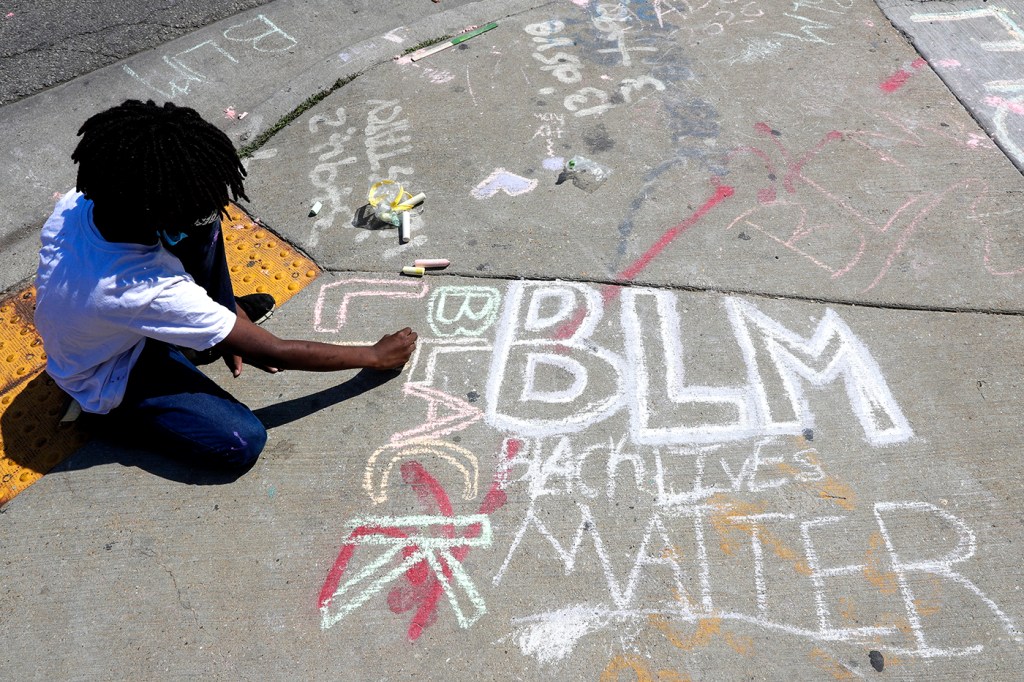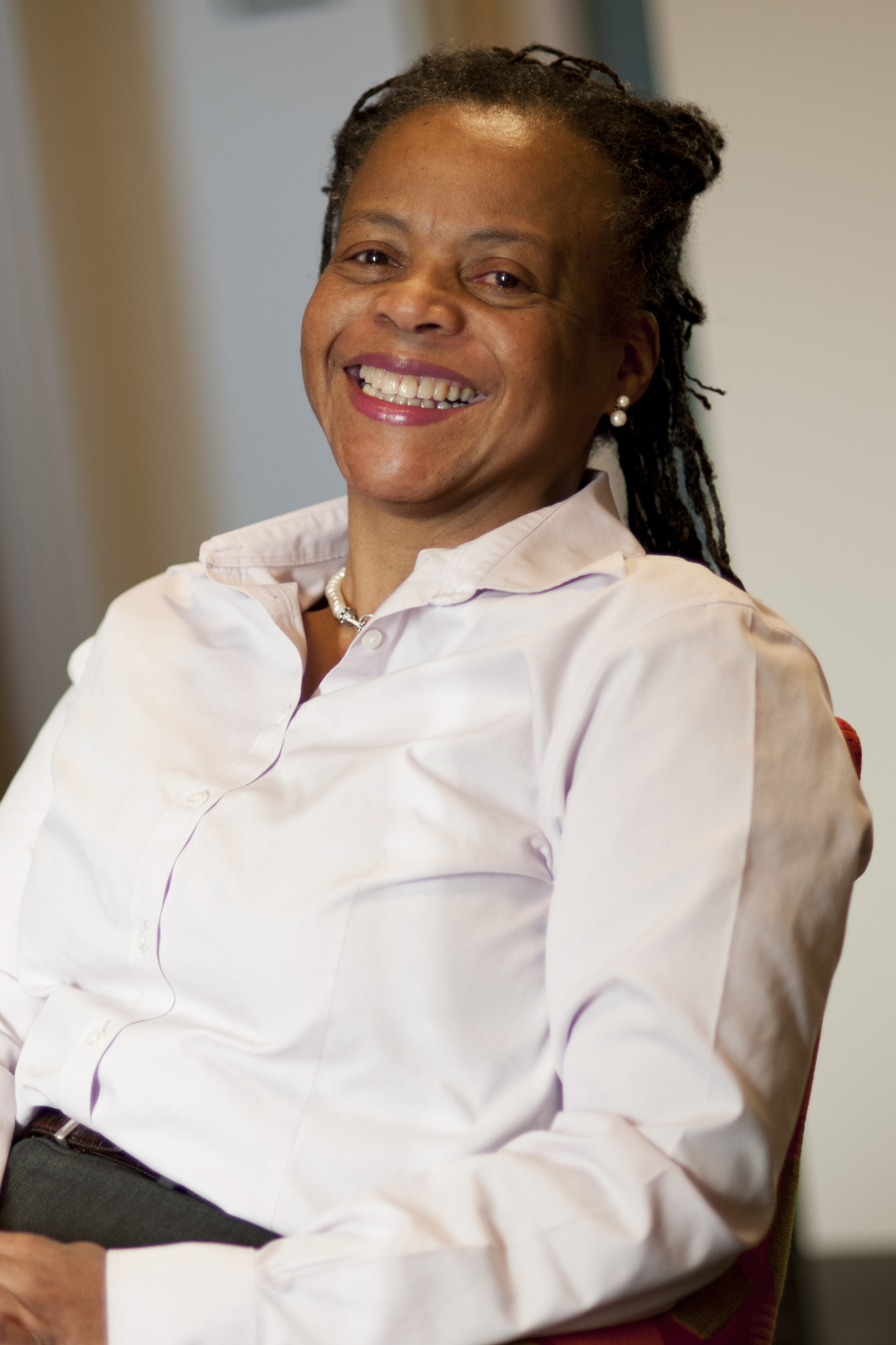How to talk to kids about systemic racism and anti-Black violence

Over the last several months, the United States has seen massive upheaval in almost every aspect of life—the COVID-19 pandemic changed the way people work, live, socialize, and study; and the blatant killing of Black people in police custody has sparked mass protests against systemic racism.
These shifts may have left many adults feeling depressed, anxious, outraged, or motivated: to find work, stay healthy, and respond to anti-Black bias. But children, who are absorbing the emotional reactions of the adults around them, have less control over how they respond, and need those same adults to explain what’s happening in a clear, age-appropriate manner, say two professors in the Bouvé College of Health Sciences at Northeastern.

Tracy Robinson-Wood is a professor of applied psychology in the Bouvé College of Health Sciences at Northeastern University. Photo by Northeastern University
Explaining racism to children is an essential conversation in families, irrespective of race or skin color, says Tracy Robinson-Wood, a professor of applied psychology who studies the intersectionality of race, ethnicity, gender, sexuality, and class, as well as racial socialization in interracial families. However, families that identify themselves as white may not sense the urgency to explain racial injustice.
“There are white parents who do not want to upset their children by having unsettling conversations about discrimination. Black parents have the daunting task of helping their children navigate injustice while encouraging them to live, love, learn, and dream,” Robinson-Wood says.
This difference was particularly stark in response to a segment that ran on the children’s network Nickelodeon in the days after George Floyd, a Black man, was killed in police custody on May 25.
On June 2, the network went dark for 8 minutes and 46 seconds—the same amount of time that Minneapolis police officer Derek Chauvin, a white man, knelt on Floyd’s neck. Floyd suffocated to death.
During that time, Nickelodeon aired a black screen with the words, “I can’t breathe” accompanied by the sound of heavy breathing. The words were among Floyd’s last, and have become a rallying cry for people protesting police violence.
The striking message drew backlash from some parents who decried the segment as inappropriate, or too violent, for children.
“But that is exactly what racism is: It is indeed violent,” Robinson-Wood says. “For parents to know their children of color are vulnerable to harm and death due to racism is also traumatic. Social, economic, and legal systems do not discriminate against white bodies in the same way.”
Robinson-Wood says she salutes Nickelodeon for taking a clear, concise stance on the issue, and presenting it as such. She adds, “It is important for white families to talk to their children about racism. Not having to do so reflects privilege.”
“In choosing to be silent about racism, white people risk producing the Amy Coopers of the world,” Robinson-Wood says, referring to a white woman who was walking her dog in Central Park on May 25, and called the police when a bird-watcher, who was Black man, asked her to follow the rules of the park and put her dog on a leash.
The man, Christian Cooper (no relation), recorded his interaction with Amy Cooper and posted it online, where it quickly gained traction and millions of views.
“I’m taking a picture and calling the cops,” Amy Cooper is heard saying in the video. “I’m going to tell them there’s an African American man threatening my life.” Christian Cooper is largely silent throughout the video, only speaking to ask Amy Cooper to put a leash on her dog. He stops filming once she does.
Amy Cooper wielded her white privilege as a weapon when she told police that she was being threatened by a Black man—at a time when Black men are more than three times as likely as white men to be killed by law enforcement in the U.S., according to a study published in the American Journal of Public Health.
“[Amy Cooper] knew the code,” Robinson-Wood says. “Having learned that she could bank on her white skin to feign victimization while asserting dominance, she mustered troops to her defense. I am grateful Mr. Cooper made it home safely.”
Robinson-Wood says that families need to talk to their white children early and often, to teach them how to use their privilege to dismantle systems that oppress Black people; not reinforce them, as Amy Cooper did. Resources such as those provided by the Center for Racial Justice in Education, can be a valuable starting point for parents and guardians looking for ways to educate their children.

Laurie Kramer is a professor of applied psychology in the Bouvé College of Health Sciences at Northeastern University. Photo by Adam Glanzman/Northeastern University
“Children are learning a lot at this moment, as they watch how the adults in their lives are responding to what’s going on,” says Laurie Kramer, a professor of applied psychology who studies child and family dynamics.
“Even if families aren’t having direct conversations about this, children are still learning what it means to react to so many people dying because of COVID-19, or to injustices in the world,” she says.
This makes it an ideal time to have those direct conversations, Kramer says, but in a way that children can understand. She suggests pausing now and then to ask children about what they understand, and what they have questions about.
Media, particularly TV shows, can also provide a way into a conversation about what’s going on, she says. If a child walks in the room while the evening news is on, it creates an opportunity to talk about what they’re feeling, and whether they have any questions about what they just saw, Kramer says.
“If there’s a member of the family who is sick, or who’s been personally affected by racism or violence, it doesn’t make sense to hide it from children,” Kramer says. “We need to be candid—to the extent that is appropriate given the child’s age—and we need to give children some time to think through what it means, and some tools to cope with it.”
When having those conversations with children, Robinson-Wood and Kramer both emphasize that the discussions should be appropriate to the age of the child.
“There’s a place for discussions about race, but we have to honor that children are different ages,” Robinson-Wood says. “What you would say to a five-year-old is different than what you would say to a 10-year-old.”
After having a conversation about race with children, getting them involved in an activity that’s related to the subject might help them process their emotions as well as encourage their ability to make choices for themselves, Kramer says.
“Kids need to feel that their voice has some weight,” she says.
To achieve this, parents and guardians can help their children write letters to a local official, encourage them to express themselves through art, or bring them to protests or marches—as long as the children are safe—Kramer says.
Inviting children to take part in peaceful rallies, letter-writing campaigns, and open conversations in this moment can also equip them with the tools to make more informed, compassionate choices as they grow up, too.
Robinson-Wood says, “By naming and opposing racism, white allies can make intentional decisions about who they will be, what they will see, and how they will live as global citizens.”
For media inquiries, please contact Shannon Nargi at s.nargi@northeastern.edu or 617-373-5718.




